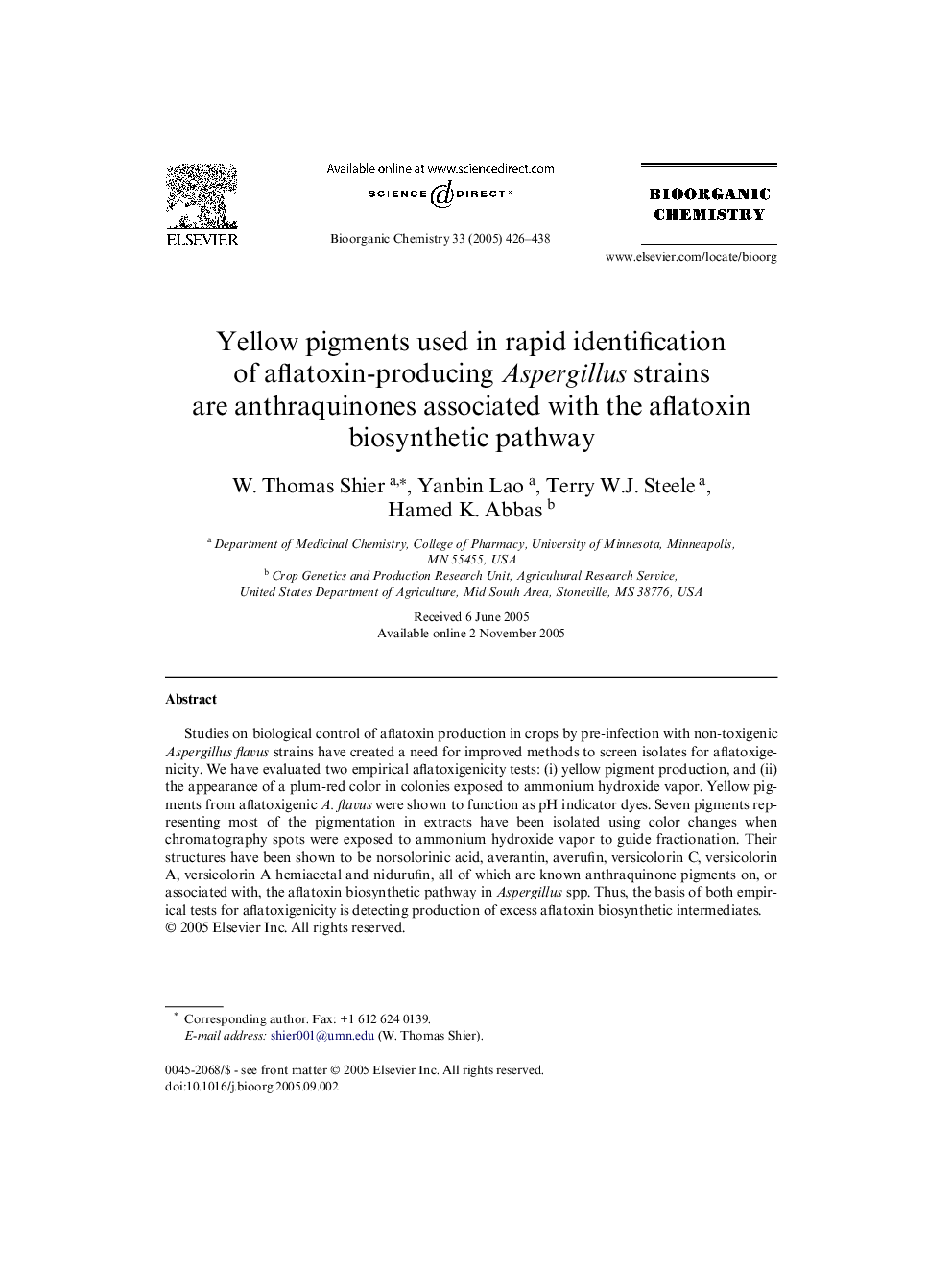| Article ID | Journal | Published Year | Pages | File Type |
|---|---|---|---|---|
| 10582187 | Bioorganic Chemistry | 2005 | 13 Pages |
Abstract
Studies on biological control of aflatoxin production in crops by pre-infection with non-toxigenic Aspergillus flavus strains have created a need for improved methods to screen isolates for aflatoxigenicity. We have evaluated two empirical aflatoxigenicity tests: (i) yellow pigment production, and (ii) the appearance of a plum-red color in colonies exposed to ammonium hydroxide vapor. Yellow pigments from aflatoxigenic A. flavus were shown to function as pH indicator dyes. Seven pigments representing most of the pigmentation in extracts have been isolated using color changes when chromatography spots were exposed to ammonium hydroxide vapor to guide fractionation. Their structures have been shown to be norsolorinic acid, averantin, averufin, versicolorin C, versicolorin A, versicolorin A hemiacetal and nidurufin, all of which are known anthraquinone pigments on, or associated with, the aflatoxin biosynthetic pathway in Aspergillus spp. Thus, the basis of both empirical tests for aflatoxigenicity is detecting production of excess aflatoxin biosynthetic intermediates.
Keywords
Related Topics
Physical Sciences and Engineering
Chemistry
Organic Chemistry
Authors
W. Thomas Shier, Yanbin Lao, Terry W.J. Steele, Hamed K. Abbas,
